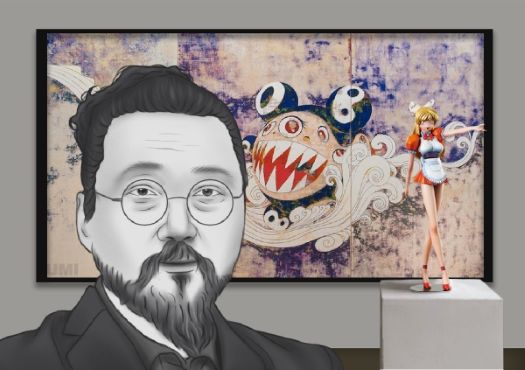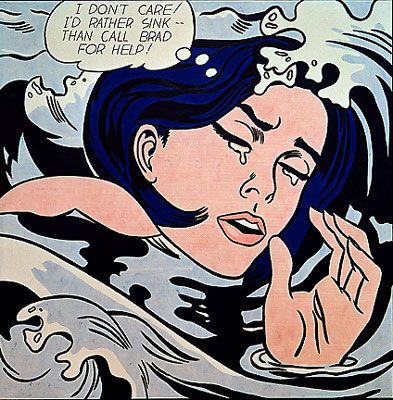Summary of Takashi Murakami
Known for his brightly colored and maniacally cheerful works, Takashi Murakami's astronomical rise to fame in the contemporary art world has been met with equal parts celebration and criticism. Murakami merges Japanese pop culture referents with the country's rich artistic legacy, effectively obliterating any distinction between commodity and high art. He is compared to Andy Warhol for his art-as-business approach, as well as for his large factories of workers who produce, market, and sell his art. His critics have derided him as a sell-out, and as playing into the art market's increasing demands for easily consumable and exotic art from Japan. But for Murakami, this is a compliment and precisely what he intends. His work draws inspiration from the Japanese subculture of otaku, which is replete with strange perversions of cuteness and innocence, as well as incredible violence. Through this, Murakami crafts a subtle critique of Japan's contemporary culture as well as the West's intruding influence upon it.
Accomplishments
- Sculptures of anime-inspired characters with voluptuous breasts shooting out streams of milk like a jet-stream, overly cheerful cartoon characters with razor sharp teeth, and sickeningly cute paintings of smiling daisies are all stylistically and thematically based on Murakami's early engagement with the Japanese subculture of otaku - a large group of fanatical geeks obsessed with the fantasy worlds depicted in anime (animated cartoons) and manga (comic books), and the concept of kawaii (all things "cute"). In his youth, Murakami immersed himself in this world, and as an artist he began to draw stylistic inspiration from it and presents to viewers from a cynical and distanced stance.
- Out of defiance for the Western-dominated art world, Murakami created his own movement called Superflat. The name refers both to the flattened compositions that lacked one point perspective of historical Japanese artistic movements such as Nihonga, as well as to the flattening (or merging) of art and commerce. Superflat is Murakami's way of bringing together Japan's history with contemporary pop culture. Its bright and easy eye-candy aesthetic immediately lured a wide audience to Murakami's work. However, critics have derided Superflat as a blatant caricature and distortion of modern Japan. Regardless, Superflat has inspired an entire generation of contemporary Japanese art.
- Taking cue from Andy Warhol's factory, Murakami developed a new form of Pop art, aptly titled Neo-Pop, in which the line between pop culture and high art was not simply blurred, but rather, completely obliterated. Murakami's Neo-Pop parodies postwar Japanese consumer culture by "sampling" and "remixing" its themes and characters within the realm of high art. Murakami's factories produce fine art that sells for millions of dollars alongside cheap trinkets that sell for just a few dollars. In this respect, Murakami shatters the illusion of elitism and superiority of the art world, while simultaneously benefitting from it economically. His collaboration with Louis Vuitton further destroyed the line between art and commerce, while the wide availability of his trinkets enable anyone to own a Murakami piece.
- Murakami's work must be understood as deeply critical to Western intervention. He was raised by parents who experienced the devastating nuclear bombings in a Japan that then faced heavy sanctions and a permanent U.S. military presence. His Japanese writings differ wildly from his essays written in English, and in them, he betrays a deep cynicism towards the West, and towards the global art market. Murakami considers Japan's contemporary obsession with cuteness, youthful innocence, fetish, and violence to be the product of U.S. intervention that began with the bomb. Many believe that Murakami considers his thrusting of this culture onto the U.S. through his elevation of it as high art as a form of revenge.
The Life of Takashi Murakami
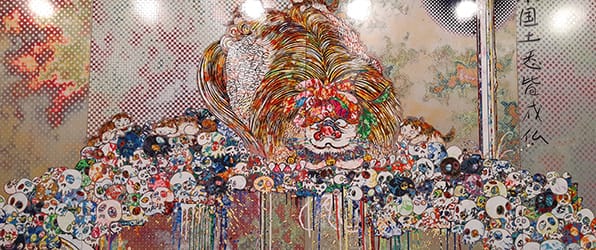
Murakami’s career has been characterized by the fierce rejection all things American (born out of a post-WWII childhood when Japan was still reeling from the effects of the nuclear bombings), and, more recently, a more nuanced exploration of Japanese-American relations (both in terms of politics and culture).
Important Art by Takashi Murakami
727
In the center of this contemporary triptych is Murakami's avatar named Mr. DOB. His open mouth reveals razor sharp teeth, as his multiple eyes roam maniacally across his environs. Japanese anime is known for cartoon characters with unusually large eyes, which frequently encompass a large portion of their face. The roving eyes in this piece take anime's exaggeration even further.
Mr. DOB, created by Murakami in 1993, is derived from the Japanese slang term "dobozite" which roughly translates as "why?" The maniacal smile of Mr. DOB can be understood as Murkami's laughing stance towards the art world, and also towards the West. The title itself, 727, is a reference to the Boeing American airplanes that flew over his childhood home while heading to U.S. military bases. In this sense, the title is a direct reference to the U.S. presence in post-WWII Japan that Murakami is so keen to both explore and critique in his art.
The stylized wave upon which Mr. DOB sits is an obvious reference to the 19th-century Japanese woodblock artist Hokusai, who was incredibly influential for future Japanese artists and manga comics alike due to his bold colors and flattened compositions. The abstract background, created by scrapping away many layers of paint, is reminiscent of a Japanese folding screen done in the nihonga style. The soothing use of paint in the background of this work is in stark contrast to the cartoonish Mr. D.O.B. atop a parodied version of Hokusai's wave. With a Ph.D. degree in nihonga, Murakami masterfully merges the worlds of historical Japanese aesthetics and popular contemporary Japanese cartoons.
Murakami began the Mr. DOB series with the purpose of creating a great icon of the contemporary world, comparable to Mickey Mouse, Miffy, or Hello Kitty. This recurring motif is Murakami's first "artistic DNA" that is spread across different media and cultural levels, from fine-art paintings and gigantic 3D sculptures to mass-produced t-shirts, posters, and key-chains. Mr. DOB is very much a brand mascot. The intention is to make the artist disappear, as he declares, "the audience doesn't need the artist, only the character." Resonating with the anonymous Japanese artisans of the past, Murakami adds, "I despair of the possibility that the world will not purify, and that art is an effective medium to survive cheerfully, even after my death." Mr. DOB's global success gave Murakami the confidence to elevate himself to the status of Cézanne, Duchamp, Warhol, and Picasso who, in his words, "had their characters (in their work and in themselves) to survive many dozens of years beyond their lifetimes." Mr. DOB is simultaneously a celebration as well as critique of contemporary culture, and this paradox is what makes this figure so intriguing.
Synthetic polymer paint on canvas board, three panels - The Museum of Modern Art, New York
Hiropon
This overtly sexualized sculpture, with her tiny waist and voluminous pink pig-tails, has breasts that are so large that they burst out of her skimpy bikini top to spray a jet-stream of milk that encircles her figure. While this sculpture resembles a cartoon character, her looming physical presence and positioning on a clean white vitrine reminds viewers that this is "high art." Combining a feminine cuteness and shocking perversion, this sculpture reflects Murakami's deep engagement with otaku subculture, and in particular, its pornographic underbelly, known as "loli-com" (short for "Lolita Complex") in which innocence and girlhood are paradoxically prized, as well as fetishized.
Hiropon is a one of Murakami's anime-inspired characters that also include a masturbating sculpture of a boy named My Lonesome Cowboy. Murakami explains these sculptures simply as a celebration of his own love for anime during teen years, "I became an otaku when I was in high school and absorbed many different things from anime like its erotic and fantasy elements... that very process resulted in this work."
However, beneath its cartoonish and seemingly vapid surface, this sculpture functions as a crippling critique of post-WWII Japanese culture. Murakami repeatedly states in his interviews and writings that Japan was infantilized by the U.S. presence following WWII, that it became the "little boy" in comparison to the U.S. Murakami states that following the end of the WWII Japan was "kept from participating fully in global geopolitics, Japanese aesthetic-political impulses imploded into fantasies of monsters and superheroes, galactic wars, cyborgs, and schoolgirls - all the displays of anime, manga, video games." He describes this as having a castrating effect on Japan, and as a result, Japan's culture became obsessed with youth, cuteness, and with it, came a darker and violent sexual manifestation of this obsession.
The title itself alludes to the darker aspects of Japanese culture - "hiropon" is Japanese slang for the narcotic - crystal methamphetamine. This literal connection to the drug culture reveals Murakami's examination of otaku culture as an illicit form of entertainment.
This now iconic sculpture articulates, in three-dimensional form, Murakami's "Superflat" manifesto - that is, a merging (or "flattening") of the high and the low, of fine arts and pop culture - by extracting the erotic from "low" anime culture and inserting it into fine-art sculpture meant for influential collectors and prestigious art institutions. This sculpture sold for $427,500 at Christie's auction house in 2002 and helped transform Murakami into a superstar in the global art world.
Fiberglass - Multiple versions sold at auction houses
Super Nova
Executed in Murakami's signature Superflat style that combines referents to historical Japanese painting alongside contemporary pop culture, this multi-paneled painting of mushrooms, titled Supernova, at first glance, seems like a playful, childhood fantasy. However, these creatures' mutant eyeballs, fang-like spikes, psychedelic colors, and distorted forms hint at sinister undercurrents. The title of the work refers to a song by the British band Oasis called "Champagne Supernova" from 1995. The association with the song - containing allusions to drug culture - suggests that these fanciful images could also be interpreted as hallucinogenic (magic) mushrooms.
At the center is a giant mushroom with a monstrously beautiful, eyeball-covered cap and shard-like teeth. A horizontal band of smaller mushrooms spreads over its seven panels. The composition is inspired by the eighteenth-century artist Ito Jakuchu's Compendium of Vegetables and Insects (1761) that focuses on mushrooms - mushrooms have been long revered in Japan for their gastronomic qualities, diversity, and reference to longevity.
However, within the context of post-WWII Japan, the mushroom is also an ominous reminder of the mushroom-like cloud produced by the nuclear bombs dropped on Hiroshima and Nagasaki by the United States in 1945. The mushroom's mutant status evokes the horrific and lasting side-effects of nuclear radiation. Throughout Murakami's works, mushrooms are prominently featured. Their whimsical presentation of a glossy cheerfulness are a subtle critique to Japan's youth-obsessed culture in which both innocence and cuteness are prized. This manifests itself in this work through its bright colors and cartoonish forms.
Acrylic on canvas mounted on board - Collection of Vicki and Kent Logan
Wink
Intruding on the formal elegance of Grand Central Station in New York City, giant bubbles adorned with Murakami's signature eye-balls and flowers give the appearance of effortlessly floating around the large room like balloons, while two grounded sculptures appear to be rising up from the floor. This installation, presented by Creative Time, creates a paradoxical and ironic co-existence of the Japanese Neo-Pop and the formal elegance of the classical Beaux-Arts architecture of Grand Central Terminal. The sculptures cast a winking glance to the curious, amused, or busy passersby, inviting them into a lighthearted conversation. As Murakami's first public installation in the U.S., Wink ambitiously introduced Japanese Neo-Pop to the wider American audience. Murakami said of the cartoon eyes on the glowing orbs that: "when you look at these pictures, they look back at you."
The art critic Roberta Smith argues against this public project, suggesting that "it is compromised by its inappropriate setting, a vast former waiting room bereft of its wood benches, which feels all wrong for contemporary art." However, this strange cultural mash-up is precisely what Murakami intends. In his increasing desire to expose the interconnected worlds of fine art and commerce, this installation stems from Murakami's desire to appeal to a mass audience, as he states: "I have learned in Europe and America the way of the fine-art scene. Few people come to museums. Much bigger are the movie theaters. The museum, that space is kind of old-style media, like opera. That's why I am really interested in making merchandise for ordinary people."
Balloons - Grand Central Station, New York
Eye Love SUPERFLAT
In 2002, at the invitation of the designer Marc Jacobs, Murakami started his 13-year long collaboration with the fashion brand Louis Vuitton. One of Murakami's designs features the LV signature monogram in ninety-seven different colors with his own signature jellyfish eyes repeated on black or white backgrounds. Through this popular project, Murakami has successfully become a pioneer of promoting art as a commercial brand. This landmark collaboration also brought in over 300 million dollars for Louis Vuitton. While many art critics and collectors scoffed at his blatant commercialization, for the artist it is simply the business manifestation of his approach to art.
Choosing to work with Murakami, Marc Jacobs, who at the time was the head designer at Louis Vuitton, aimed to draw a new generation of Japanese youth into the arms of the luxury bag-maker. Murakami, on the other hand, believes that fashion can be a visual reflection of the era, arguing that "subcultures and specific incidents in various countries mix together to create the atmosphere of an era and that, in turn, begets fashion." This ambition of presenting our era conforms to his larger artistic goal - confronting and revealing the essence of the current Japanese society to the global audience.
Shortly following the launch of his line at Louis Vuitton, Murakami then re-appropriated the exact same images printed onto bags into paintings meant for prestigious art institutions and famed collectors, further blurring the distinction between art and commodity. In the 2007 "© Murakami" show at the Museum of Contemporary Art Los Angeles, a Louis Vuitton boutique was part of the exhibition, which, like the art critic Dave Hickey commented, "has turned the museum into an upscale Macy's."
Looked from another angle, the Louis Vuitton / Murakami collection creates another elitist world for the rich. As the art historian Kristen Sharp comments, "Murakami is playfully (and potentially cynically) immersed in the processes of late capitalism, in proposing that he is challenging the distinction of art, while at the same time exploiting and celebrating the processes of commodification and symbolic exchange that exist in the postmodern."
Acrylic on canvas mounted on board - Kaikai Kiki Co., Tokyo
Blue Flowers & Skulls
Death and youth collide in this work as smiling daisies and large-eyed skulls overwhelm the picture plane and chaotically blend together with the aid of the work's blue color scheme. The digitally composed flowers are reminiscent of the yellow "happy face" emoji, as well as computer graphics used in video games. The mash-up of cuteness and death are Murakami's way of both engaging with - and critiquing - the Japanese obsession with Kawaii (cuteness). Murakami states that "Kawaii culture has become a living entity that pervades everything. With a population heedless of the cost of embracing immaturity, the nation is in the throes of a dilemma: a preoccupation with anti-aging may conquer not only the human heart, but also the body." In this quote, Murakami reveals a darker engagement with these cheerful and juvenile flowers that takes its aim directly at contemporary society. The role of the skull throughout Western art history has functioned as a memento mori, or a reminder of one's own eventual death. This also coincides with the Japanese Buddhist conception of Shogyo mujo that roughly translates as "Everything is transient." Murakami interprets this saying as partially signifying that, in the end "everyone will die, so you shouldn't worry."
While this work looks incredibly contemporary in both style and content, the process of its creation through serialized production and the use of computer databases of vector drawings is directly connected to the copying culture in pre-modern Japan. To Western critics, this culture was considered as pejorative and lacking unique substance. However, when bijutsu (literally meaning "fine arts," a concept borrowed from the West during the Meiji period) was adopted in Japan, the copying culture was embraced and heralded as a legitimate art form. Murakami revives the traditional concepts of collaborative creativity, expression, and execution, manifesting a difference to the Western modernist notion of artist as singular genius, as noted by the art historian Kristen Sharp. This work is reflective of many of Murakami's paintings, installations, and sculptural projects in which smiling daisies and skulls repeat across his large oeuvre, and in his obsessive repetition of these motifs his darker and more subversive themes are expanded and re-contextualized over and over to the point of visual exhaustion. This is precisely what Murakami intends.
Acrylic on canvas mounted on board
The 500 Arhats
Grotesquely drawn old men, chains of smaller human figures, and depictions of the Chinese guardians of the four celestial directions - blue dragon (east), white tiger (west), red bird (south), and black tortoise (north) - overwhelm the viewer in this monumentally sized work that is over 320 feet long and 10 feet high.
These old men are arhats, which roughly translates as "one who is worthy," and refers to monks who have achieved enlightenment in Buddhism. These arhats, however, appear devious and almost evil as they loom larger-than-life over the viewer, casting dubious glances. The smaller figures at the base of the painting are those to whom the arhats want to reach - Buddhist followers. Murakami is just as merciless in their depiction as well, offering a troubling inversion of beauty and serenity that is ordinarily associated with the prized mental state of enlightenment. Their skeletal frames, hunched bodies, and red-rimmed eyes reveal Murakami's deep cynicism.
The title refers to the Japanese legend which states that 500 Buddhist monks led by a celebrated Chinese Buddhist priest helped spread Buddhism throughout Japan. Also important to this work is Murakami's fascination with the Heian period (794-1185 CE) in Japan, when the country was rocked with multiple earthquakes and tsunamis. As a response to these natural disasters, Buddhist monks created artworks that appealed to the grieved victims. These artworks depicted the same celestial guardians and arhats as are shown in this enormous piece. It is this tradition of making art for victims of natural disaster is one that Murakami furthers and re-contextualizes with this piece: the painting was conceived after 3/11, or the Japanese earthquake in 2011. The earthquake and resulting tsunami killed over 15,000 people in Japan, in addition to causing a level 7 meltdown at the Fukushima Daiichi Nuclear Power Plant. This forced the evacuation of hundreds of thousands of residents. Murakami initially sketched out his idea directly after 3/11, and handed it over first to a team of researchers, and then to his art assistants, who then made over 1,000 sketches of the work. It took over 200 people working 24/7 in shifts to complete. Murakami states, "I consider the hundred-meter painting an equivalent to those historical works. It's a consolatory painting and a way for me to understand my place in nature and in history."
It was first shown in Doha, out of gratitude to the nation of Qatar, who was one of the first countries to offer assistance after the Tsunami in 2011. Qatar also factored heavily into the style of the piece itself. Murakami notes that he was struck by the Sci-fi-like appearance of Doha, a dazzlingly city in the middle of a desert. This piece also marks a shift from Murakami's previous aims at presenting Japanese culture to a primarily Western audience. He states, "it was very difficult to relate this exhibition to the usual Western art audience. Instead I was trying to understand what the Qatari audience would be interested in seeing. So I started to fantasize about a crossover between Western culture, the Middle East, and Asia. And I wanted to compete with this sci-fi city that is outside the museum. That's why I thought of the exhibition as a gigantic amusement park." This work represents a milestone in Murakami's career, exploring topics of religion, mortality and the limitations of humans in the face of natural disaster.
Acrylic on canvas, mounted on board - Private Collection
Biography of Takashi Murakami
Childhood
Takashi Murakami was born in 1962. Murakami's father was a taxi driver, and his mother was a homemaker. His mother, who studied needlepoint and designed textiles, had a tremendous influence on Murakami's interest in the arts. His parents often had him write reviews on exhibitions he had seen. If he refused, he was forced to go to bed without dinner. Raised in such a highly competitive environment, Murakami learned how to think and write quickly. These skills partly inform his later fame as an acerbic art critic.
Murakami grew up hearing his mother tell him that had the U.S. dropped another nuclear bomb, he would not have been born. The omnipresence of the devastation and the ensuing U.S. presence in Japan in the decades following WWII had a tremendous influence on Murakami's artistic evolution. During Murakami's childhood, Japan created a national identity that revived traditional Japanese culture and put tremendous pressure on its workforce to produce in order to compete with the West both economically, as well as culturally. This hybrid emphasis on traditional Japanese culture and Western influences was reflected in Murakami's childhood activities, which ranged from attending Buddhist rituals and taking Japanese calligraphy courses to visiting museum exhibitions of masters such as Renoir and Goya.
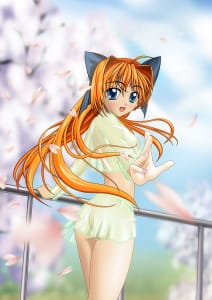
Though he developed an early appreciation of both traditional Japanese culture and modern European art, Japanese animation had the most significant impact on him during his formative teenage years. This explains why a major part of his works are dedicated to the otaku audience, a subculture obsessed with apocalyptic and fetishistic imagery. These recurring motifs in anime and manga coincides with otaku followers' inability, or perhaps refusal, to interact in the real world or apply social skills. Murakami himself links the otaku subculture directly to post-WWII Japanese society.
Early Training and Work
Initially interested in studying background art for animations, in 1980 Murakami enrolled in the nihonga (a traditional Japanese painting style that draws on elements of Western art) department of the prestigious Tokyo National University of Fine Arts and Music, where he stayed on for master's (completed in 1988) and doctoral degrees (completed in 1993). While diligently studying the ancient techniques at university, he also learned animation production outside of school, and continued his knowledge of the contemporary art world through visiting exhibitions and his school's visiting artist program.
In 1984, an inspiring yet infuriating meeting with Joseph Beuys proved to be a turning point in Murakami's artistic career. During an in-class discussion, Beuys ignored several of the students' questions, saying "the questions have no meaning. I would like a more meaningful question." Beuys's dismissive attitude upset Murakami, while the famous artist was in turn frustrated with what he saw as uninformed Japanese art students. As a result, by his seventh year at school, Murakami's began to reflect his deeply critical attitude towards the Western art market.
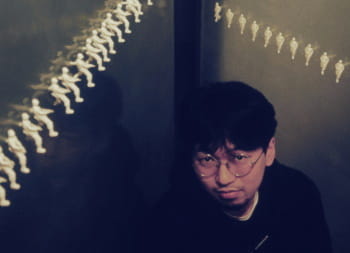
Murakami's early works reflect the realities with which he had grown up, exploring the complex post-WWII relationship between Japan and the U.S. For example, Polyrhythm (1991) uses plastic World War II toy soldiers, Sea Breeze (1992) refers to the atomic bomb. These works demonstrate his early development of a playful and seemingly light style that always refer to a more cynical stance.
Mature Period
In 1994, Murakami traveled to New York City to participate in P.S.1 Contemporary Art Center's International Studio Program on a fellowship from the Asian Cultural Council. Isolated and fairly unhappy in New York, Murakami was surrounded by the pressures of the American art market and gallery system. There he realized that in order to succeed in this world, he had to abandon his overly-intellectual Japanese preoccupations, and to present a more simplified brand of himself and his art as quintessentially Japanese. This time therefore represents a radical breaking point for his career. Prior to this, his work focused on a global bent to contemporary art, but it was during this visit that he decided to re-engage with his Japanese identity and strengthen his work's engagement with both the high art form of nihonga as well as the popular culture forms of anime and manga. On the eve of his departure from New York, while playing a late-night word game with friends using non-sense words like "dobozite" (a manga word meaning "why?"), Murakami came up with the figure Mr. DOB, which would go on to become the artist's signature character across his diverse array of artistic media. Mr. DOB-shaped inflatables were shown for the first time in New York at the Angel Orensanz Foundation in 1995, but did not receive any significant critical attention. In 1996, he was included in a group exhibition at the gallery Feature. This exhibition marks the beginning of his international acclaim and fame. Murakami went on to design a series of major sculptures inspired by otaku subculture in the second half of the nineties, including Miss ko2 (1996-1997), Hiropon (1997), and My Lonesome Cowboy (1998). Murakami's liberal borrowings from Japanese popular culture was very comparable to Roy Lichtenstein and Andy Warhol's appropriations of comics.
In order to produce his otaku-inspired sculptures, in 1996 Murakami founded the Hiropon Factory. Like many of Murakami's works, his factory is modeled on both traditional Japanese art workshops, such as the ones that produced the colorful woodblock prints from the Edo period, as well as on Andy Warhol's Factory. At Hiropon assistants trained in various areas of expertise collaborate under the artist's supervision for large-scale, mass-marketed projects. In 2001, the Hiropon Factory evolved into Kaikai Kiki Co., a highly organized corporation employing about fifty people in its Tokyo headquarters, and twenty in its New York office and studio. Besides producing and marketing Murakami's works, the corporation promotes new artists; operates art fairs, organizes collaborative projects with individuals and companies in fashion, music, and entertainment, and develops animated videos and films. Kaikai Kiki represents a shift in the production of modern artwork where fine art and commerce are seamlessly integrated, and where the artist's physical hand in the making of the artwork no longer determines the financial value, but rather the symbolic value is created through the artist's association with the art-commodities produced in his business-oriented factory. Now the corporation employs as many as 60 full-time employees in its Tokyo location, and more than 20 in New York.
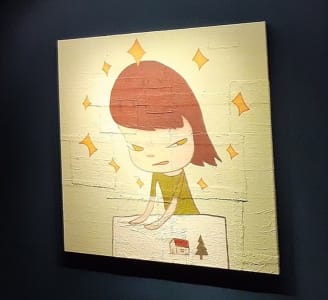
In 2000, in search of a post-war Japanese identity and out of a frustration of his compatriots' indifference to Japanese contemporary art, Murakami presented the theory of Superflat in a group exhibition of the same name. The exhibition featured his own works as well as the ones by Yoshitomo Nara, Shigeyoshi Ohi, Aya Takano, and others. The Superflat theory soon swept across the contemporary art world, becoming a landmark movement in contemporary Japanese art, the latest major style to reach international acclaim in the art world since the 1950s Japanese Gutai Art Association.
Murakami's historic essay, "A Theory of Super Flat Japanese Art" (2000) is his ultimate expression of his early scorn for the art world. There, he articulates desire to produce a uniquely Japanese art form that is directly related to the long shadow cast by Japan's trauma after the humiliating defeat of WWII. This essay seeks to extract the very marrow of the post-war Japanese culture in order to utilize it as a foundational philosophy for his artworks. As writer Pico Iyer states, Murakami "is a realistic chronicler of the flight from the real. And much as Andy Warhol decided to give modern America exactly the glut of mass production and mass celebrity it seemed so intent upon, with a vengeance, so Murakami offered Japan precisely the images it loves, in its fondness for the kawaii and those deviant forms loved by the otaku." The Japanese version of this essay demonstrate a vitriolic anti-Americanism, while his English translations focus more on the stylistic evolution of his works. In both versions, however, Murakami explains the concept of, as he describes, "Superflatness is an original concept of the Japanese, which has been completely Westernized."
His epic Superflat thesis aims to seamlessly unite the history of Japanese art from 12th and 13th -century Genji and Heiji scrolls with contemporary Japanese pop-culture. Despite his art-historical and culturally-rich referents in his art, essays, manifestos, and interviews, people are often immediately drawn to his work for its seeming superficiality and dazzling explosion of characters and colors. This paradox between the profound meaning and the immediate pleasure enjoyed by his audience directly expresses of the fluid nature of his Superflat concept.
Current Practice
Ever since the founding of the Hiropon Factory, Murakami's projects have been more commercially charged and have explored unconventional artistic media including fashion, music, entertainment, public installations, animation, and films. This shift between roles reveals Murakami's ambition of redefining what a postmodern, international artist can be.
In 2002, at the invitation of the designer Marc Jacobs, Murakami began his long-term collaboration with the elite fashion brand Louis Vuitton. Without losing his identity in the LV project, Murakami was able to tweak the brand to incorporate his own unique aesthetic. For example, he combined LV's monogram with his own signature jellyfish eyes or overprinted the monogram with his cartoon cherries. This collaboration made Murakami widely known for further blurring commercial boundaries, elevated his status to celebrity in his home country, and raised economic value of his art to one that is highly prized among (mostly Western) collectors.

His fame in the fashion world swept across the pop music industry as well. In 2007, Murakami designed the Dropout Bear character for singer Kanye West's album Graduation and directed an animated video for West's song "Good Morning." His collectors in the pop music world include the South Korean superstar musician G-Dragon and Pharrell Williams, who also collaborated with Murakami in 2009 and 2014. Murakami later "re-appropriated" these projects by incorporating the identical imagery into his paintings and sculptures meant for prestigious art institutions or influential collectors.
The Legacy of Takashi Murakami
Murakami has inspired and personally mentored the next generation of Japanese artists. He named himself as the guru of the kuriieita (creator) generation, the young adults of Japan's two "lost decades" of the 1990s and 2000s who grew up in a society in decline. To these followers in Japan, he declared he was on a mission to fool the West and smash the Japanese art system. He is also an active mentor to emerging Japanese artists through employing them at his factories, curating exhibitions of their work, and writing essays that contextualize their work within the legacy of modern Japanese art. Protégés at the Kaikai Kiki Co. include Chiho Aoshima, Chinatsu Ban, Akane Koide, Mahomi Kunikata, Mr., Rei Sato, and Aya Takano, whose strong presence in the Japanese art world defines the landscape of Japanese art in the 21st century. Despite the clash of reception between his artwork, alternating between heavy disdain and blatant celebration, Superflat has come to dominate the world's view of Japanese contemporary art.
Influences and Connections

-
![Katsushika Hokusai]() Katsushika Hokusai
Katsushika Hokusai -
![Andy Warhol]() Andy Warhol
Andy Warhol -
![Roy Lichtenstein]() Roy Lichtenstein
Roy Lichtenstein -
![Keith Haring]() Keith Haring
Keith Haring - Hishida Shunso
-
![Yoshitomo Nara]() Yoshitomo Nara
Yoshitomo Nara - Masato Nakamura
- Min Nishihara
- Makoto Aida
- Midori Matsui
![Aya Takano]() Aya Takano
Aya Takano- Chiho Aoshima
- Mahomi Kunikata
- Chinatsu Ban
- Akane Koide
-
![Superflat]() Superflat
Superflat ![Neo Pop Art]() Neo Pop Art
Neo Pop Art
Useful Resources on Takashi Murakami
- Takashi Murakami: The Octopus Eats Its Own LegOur PickBy Michael Darling, Madeleine Grynsztejn, and Michael Dylan Foster
- Takashi Murakami: The 500 ArhatsOur PickBy Takashi Murakami and Mori Art Museum
- Little Boy: The Arts of Japan's Exploding SubcultureOur PickBy Takashi Murakami
- Murakami VersaillesOur PickBy Laurent Le Bon, Cederic Delsaux, Philippe Dagen, and Jill Gasparina
- Takashi Murakami: Summon Monsters? Open the Door? Heal? Or Die?By Takashi Murakami
- Takashi Murakami: The Meaning of the Nonsense of the MeaningOur PickBy Amanda Cruz, Dana Friis-Hansen, and Midori Matsui
- My Reality: Contemporary Art and the Culture of Japanese AnimationBy Jeff Fleming, Takashi Murakami, Matthew Benedict, Lee Bul, et all.
- Louis Vuitton City Bags: A Natural HistoryBy Colombe Pringle, Deyan Sudjic, Florence Muller, Ian Luna, Jean-Claude Kaufmann, Mariko Nishitani, and Rei Kawakubo
- Supernova: Art of the 1990s from the Logan CollectionOur PickBy Takashi Murakami, Katy Siegel, Huan Zhang, et all.
- MurakamiOur PickBy Paul Schimmel and Lisa Gabrielle Mark
- Takashi Murakami: Lineage of Eccentrics: A Collaboration with Nobuo Tsuji and the Museum of Fine Arts, BostonBy Anne Nishimura Morse
- Takashi Murakami: The Meaning of the Nonsense of the MeaningBy Amanda Cruz, Dana Friis-Hansen, and Midori Matsui
 Ask The Art Story AI
Ask The Art Story AI